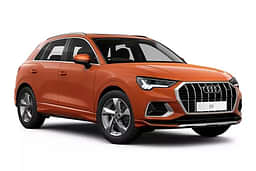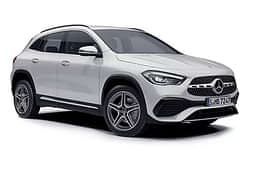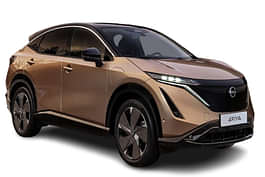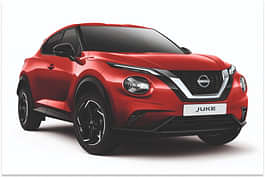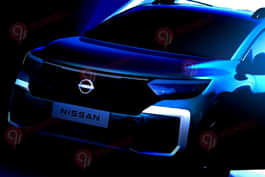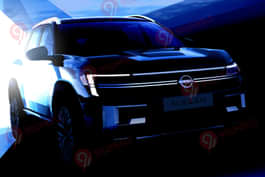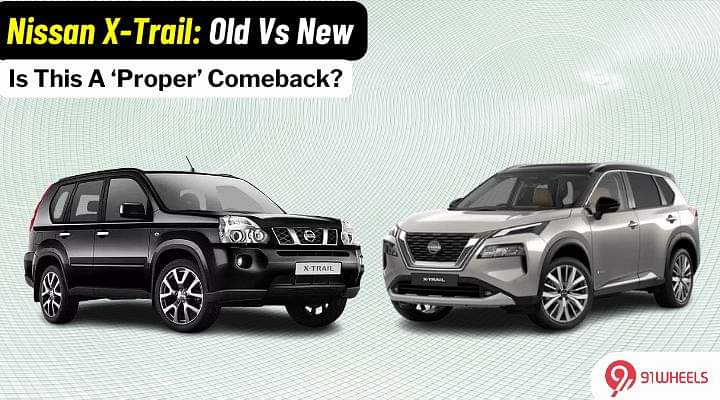
KEY HIGHLIGHTS
- The first X-Trail was launched back in 2005
- Was offered with a diesel powertrain and 4x4
- The current X-Trail is built on a monocoque frame
- Loses out on 4x4 and is powered by a petrol engine
Nissan has had quite the colourful journey in India, having faced its fair share of highs and lows. The Japanese car maker started off with the X-Trail, but discontinued it in 2014. However, this year, the Nissan X-Trail has been brought back as a brand-building strategy before the new-generation SUVs come in 2025.
We shall take a quick look between the old and the new versions of the Nissan X-Trail, but before that, make sure to join the 91wheels WhatsApp Community for the latest automotive news and to get in touch with fellow enthusiasts.
Nissan X-Trail Old Vs New: Design
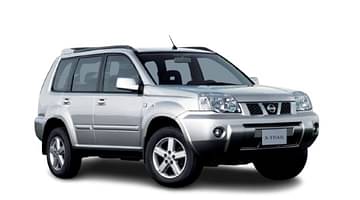
The original X-Trail debuted with a boxy design, featuring a clean profile and no dramatic lines anywhere. The large headlights worked as well as they looked, and it kept things simple at the rear as well, with vertical tail-lights placed higher up and a clean tailgate. The overall design was something rather unique and it holds up well even after all these years. While it was seen on the roads, it was not that familiar a sight.
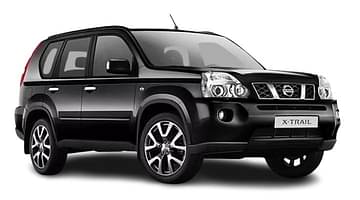
Throughout its lifecycle, the X-Trail received one facelift, which was basically an evolution of the older car, but with more pronounced elements. However, it still remained a rather handsome car to look at, and its road presence is something else even today.
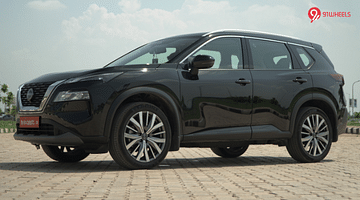
The latest-gen X-Trail has grown in size, and it appears like a smaller version of the Patrol. However, despite getting 20-inch wheels, it still manages to get dwarfed by a certain 'daddy' of SUVs from a lower segment. The latest car follows modern design trends and gets a split headlamp treatment, while the somewhat-bulbous rear will remind you of the Kicks. That said, it certainly is not a bad car to look at.
Also read: MG Windsor EV Key Features Explained: Has It All Or Could Be More?
Nissan X-Trail Old Vs New: Powertrain and Specs
The old X-Trail was purely a diesel offering, which made sense given how diesel-hungry we used to be back in the day. In its initial days, it was powered by a 2.2-litre diesel powertrain with 134bhp and 314Nm of torque, paired to a 6-speed manual gearbox.
The facelifted X-Trail came with a smaller 2.0-litre diesel powertrain, with 148bhp and 320Nm of torque on offer, paired to either a 6-speed manual or a 6-speed automatic transmission. This engine was said to be a great performer with good mid-range punch.
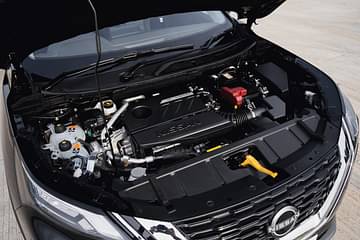
Cut to 2024, and Nissan seems to have taken one step forward, two steps back. The current-gen X-Trail gains mild-hybrid technology and produces more power and torque too, but loses out on 4x4, and larger capacity diesels altogether. Instead, it gets a 1.5-litre turbo-petrol unit with 160bhp and 300Nm of torque, paired to a CVT gearbox.
A thing to be said about this powertrain is that it is fairly refined, despite being a three-cylinder unit. There is minimal engine noise coming in, unless you rev it hard in Sport mode, which you won't to switch to very often. The Standard mode feels more than enough for daily driving and out on the highway as well, proving to be capable, comfortable mile-muncher. However, its capabilities with a full-load remain untested as of now.
Also read: Tata Curvv Pure + S: Most Value-for-Money Variant Starting At 11.7 Lakh
Nissan X-Trail Old Vs New: Interiors and Features
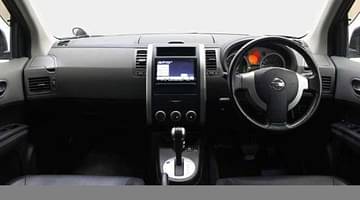
This is where it feels like Nissan has truly gone a few steps backward, since the current-gen X-Trail misses out on a lot of features not just by today's standards, but also from the fact that the older car offered them as standard!
For example, the current Nissan X-Trail misses out on power-adjustable ventilated full-folding front seats, along with leather upholstery, which was available on the older car. By today's standards, it also misses out on ADAS technology as well. However, strangely the ORVMs on the current car feature blind spot indicators, even though they do not work.
The old X-Trail also offered screens for the second-row passengers, along with cooled/heated cup holders, and a tyre inflator as standard, none of which are available on the current car even as an option. In fact, the current X-Trail does not even get a spare tyre, and instead makes do with a puncture-repair kit. Because of a hump below the second-row bench, people with a larger frame will find it uncomfortable with low underthigh support.
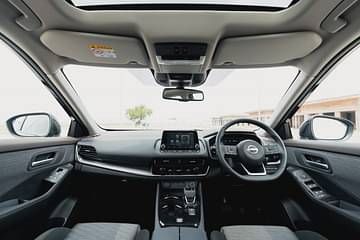
However, on the current car, the front seats are genuinely very comfortable, with good levels of bolstering and they hold you quite well. The dual-zone climate control chills down the cabin in a matter of mere seconds too. However, the audio system sounds starts to sound rough on higher volumes, and that 8-inch touch screen infotainment may feel small for the segment it comes in, even if it works well.
Verdict
For the price that the current X-Trail comes in at, there are quite a few glaring omissions, especially when you consider it is devoid of a lot of things that were present in its predecessor. However, it still is a rather comfortable car to drive, and it never feels cumbersome even in the city.



